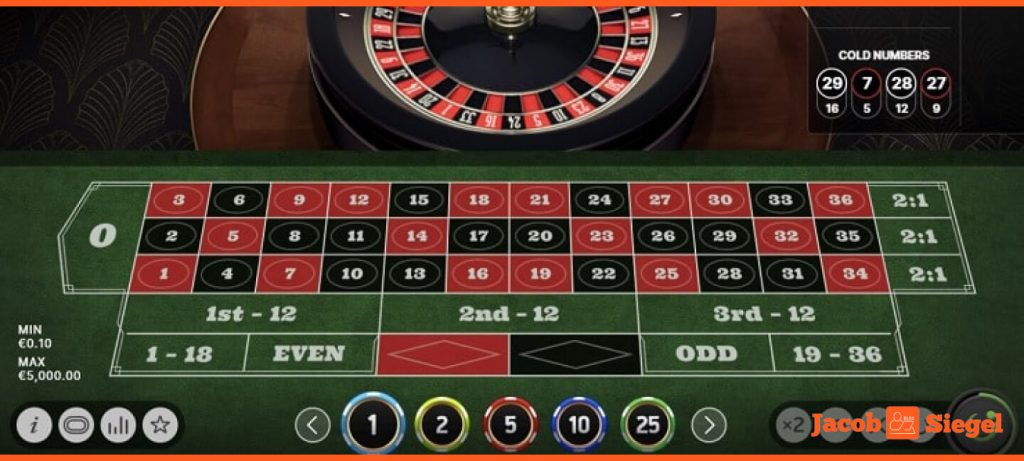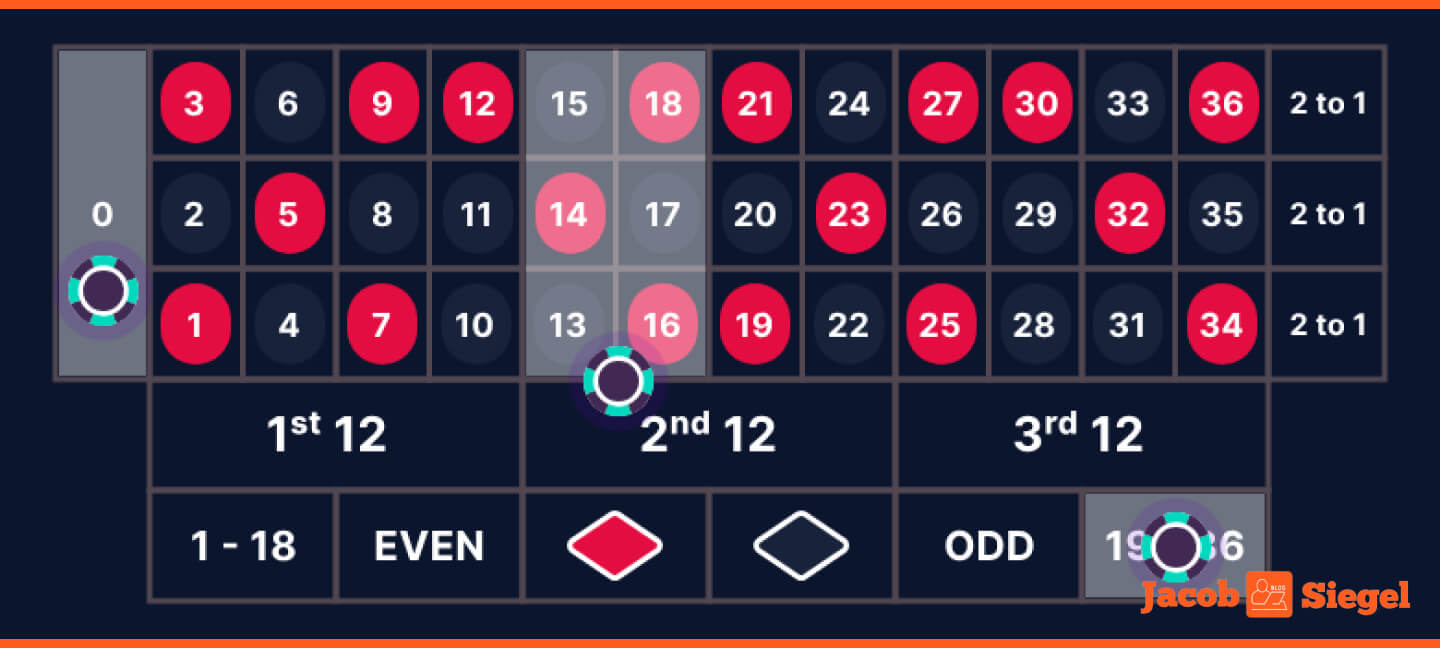Roulette is an enthralling game of luck that has intrigued players for generations. Finding methods for predicting the outcome is a widespread challenge. This piece details the top roulette strategies – ways through which you can boost your odds of victory. Discover their fundamentals, potency, and the manner to use them in your upcoming match.
What Is a Roulette System?
A roulette game strategy is a planned approach for participating in the famed casino game. The objective of these strategies is to direct the player in betting to enhance possible gains and cut down losses.
- Roulette may be a game of luck, but these strategies aim to amplify the chances of winning. They guide players to make educated choices on where to position and the amount to wager;
- A strategy typically involves explicit instructions on modifying your bets based on past results. By adhering to the plan, players seek to fabricate situations where they hold a mathematical advantage or lessen losses during negative sequences;
- It’s vital to recognize that no strategy can ensure triumph. The wheel’s result is unpredictable, and strategies don’t alter the inherent house advantage. But they can offer an organized approach to betting, rendering the game more systematic;
- Since no strategy is fail-safe, players should employ them with discretion and cognizance of their constraints. Utilizing a strategy should not foster financial peril.
Martingale
The Martingale method is a recognized betting strategy in roulette, multiplying the bet after each loss and reverting to the initial bet after a win. If you commence with a $10 bet and lose, the next stake is $20. If you lose once more, it’s $40. A win at this point brings you back to the starting $10 bet. The goal is to recoup all losses with a profit equal to the first bet.
Pros and cons:
- Ease and the possibility for near-term wins are the principal benefits;
- However, it’s associated with dangers like the chance for considerable losses, casino table constraints, and no adjustment to house advantage or probabilities;
- Substantial funds are needed to offset losing runs, and anxiety can rise with escalating bets;
- It fails to ensure a win, as it doesn’t modify the basic odds of the game.
Reverse Martingale

The Reverse Martingale, or the Paroli method, is the contrary of the Martingale, doubling the bet after each victory and reverting to the starting bet after a defeat. Thus, beginning with a bet of $10 and a victory, the next stake is $20. If you win again, it’s $40. A loss brings you back to the $10 bet. The system strives to capitalize on winning sequences.
However, this approach has its distinct aspects:
- It benefits from reduced risk relative to Martingale and can realize substantial gains during winning runs;
- The downsides encompass modest gains without back-to-back wins and no influence on the house edge or probabilities;
- It demands self-control to cease doubling after victories and relies on a chain of successive wins, which is never assured.
D’Alembert
The D’Alembert approach is a betting method often utilized in roulette. Credited to French mathematician Jean le Rond d’Alembert, this method entails boosting the bet by one unit after a defeat and lessening it by one unit following a victory. You begin with a $10 bet and lose, the next stake is $11. If they lose once more, it’s $12. Winning at this juncture reduces the bet to $11. The tactic strives to hold bets and deficits at a minimum, offsetting them over a duration.
Here’s an examination of this technique’s characteristics:
- It’s regarded as a more secure alternative relative to Martingale since wagers escalate more leisurely;
- Gamblers can more readily rebound from losing runs without requiring an enormous purse;
- However, earnings are frequently slight, and it doesn’t alter the house advantage or essential probabilities of the game.
Fibonacci
The approach is grounded in the renowned Fibonacci series, where each figure is the total of the two preceding ones: 1, 1, 2, 3, 5, 8, 13, and onwards. In this method, gamblers obey the series, enlarging their stake in accordance with the subsequent figure in the series after a defeat, and shifting two figures back after a triumph. You commence with a $1 bet; if you lose, the next stake ought to be $1, then $2, then $3, and onwards. If you win $3, the next bet drops to $1. The aim of the Fibonacci approach is to recoup lost wagers over multiple victories, not merely one.
This technique has both its strong and weak aspects:
- It’s less assertive than the Martingale method, as wagers enlarge more gradually;
- The approach may be engaging for those fond of mathematical sequences;
- However, an extended losing run may lead to significant deficits, and a substantial winning run is necessary for recovery.
Labouchere
Labouchere is a noted betting method in roulette, celebrated for its distinct means of managing wagers. It requires employing a series of figures to determine bet amounts. Players combine figures to compute the wager and erase them when they succeed. A series like 1-2-3 signifies a stake of $4 (1+3). If the wager succeeds, the figures are removed, and the subsequent bet is $2. If the stake is lost, the 4 is appended to the series, making it 1-2-3-4. The goal of the procedure is to erase all figures in the series, attaining a profit that equals the sum of the original series.
Here’s an insight into what sets this system apart from the rest:
- It offers a systematic approach, which some players find engaging;
- It can lead to profits even if there are more losses than wins in a sequence;
- However, a losing streak can cause the sequence to become long, leading to larger bets;
- Terminating the system before all numbers are crossed off can lead to a loss.
James Bond System
The James Bond system is a betting strategy named after the famous fictional spy. Unlike other strategies, this doesn’t involve progression. It requires a specific division of the bet across numbers. For example, with a $100 bet, $70 is placed on the high numbers (19-36), $25 on the numbers 13 to 18, and $5 on 0. So, if a number between 19 and 36 comes up, you win $80. If a number between 13 and 18 comes up, you win $100. If 0 comes up, you win $160. Any other number results in a loss. The aim is to cover a large part of the roulette table to increase the chances of a win.
Let’s take a look at what makes this strategy unique:
- It covers more than half the table, offering frequent wins;
- It provides an uncomplicated, fixed betting pattern;
- However, a loss can be significant and erase previous gains.
Read about Best No Deposit Bonuses
Conclusion
The different roulette systems described in this article offer different approaches to risk management. While they can add intrigue and structure to the game, it is important to remember that none of these systems can guarantee consistent profits. Recognizing the risks inherent in a game of chance like roulette allows you to make informed decisions.

